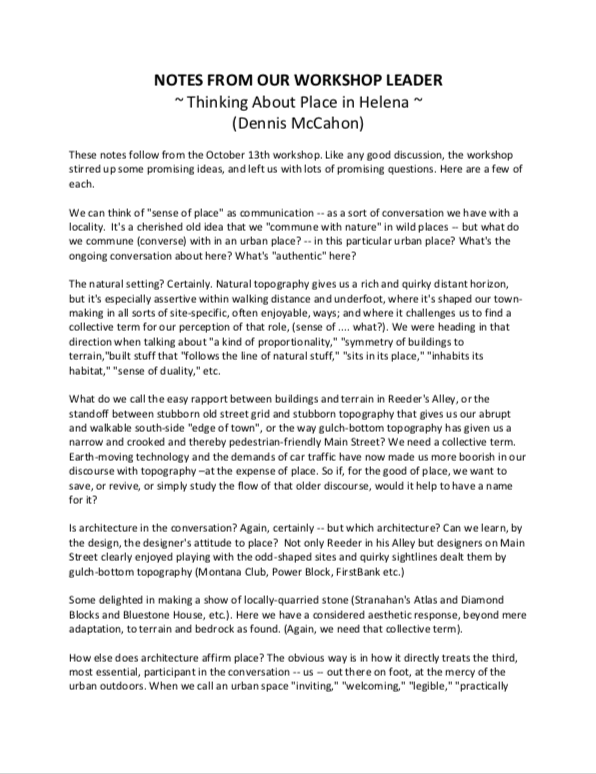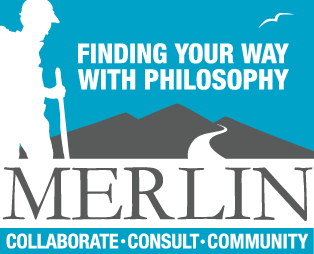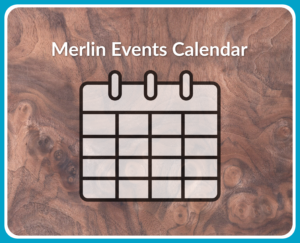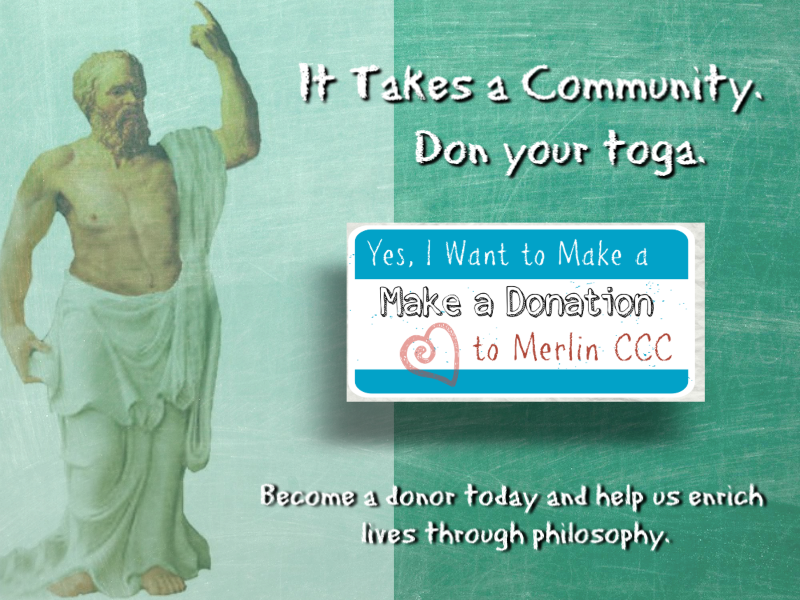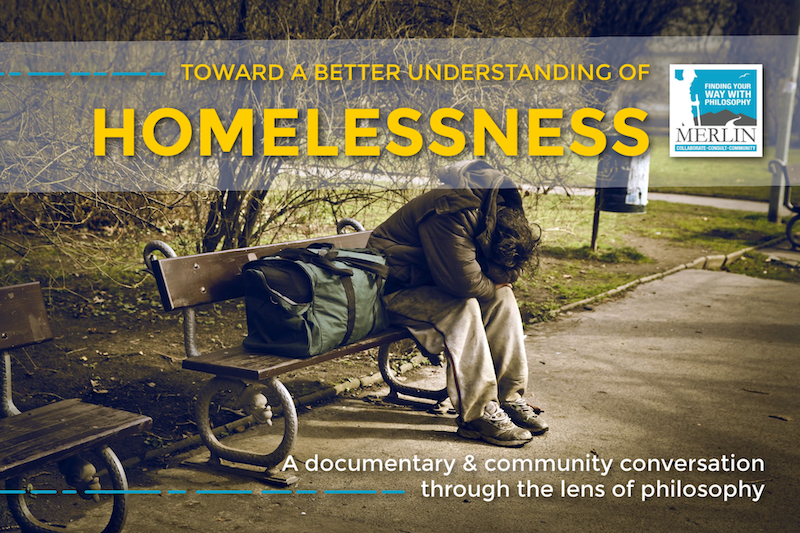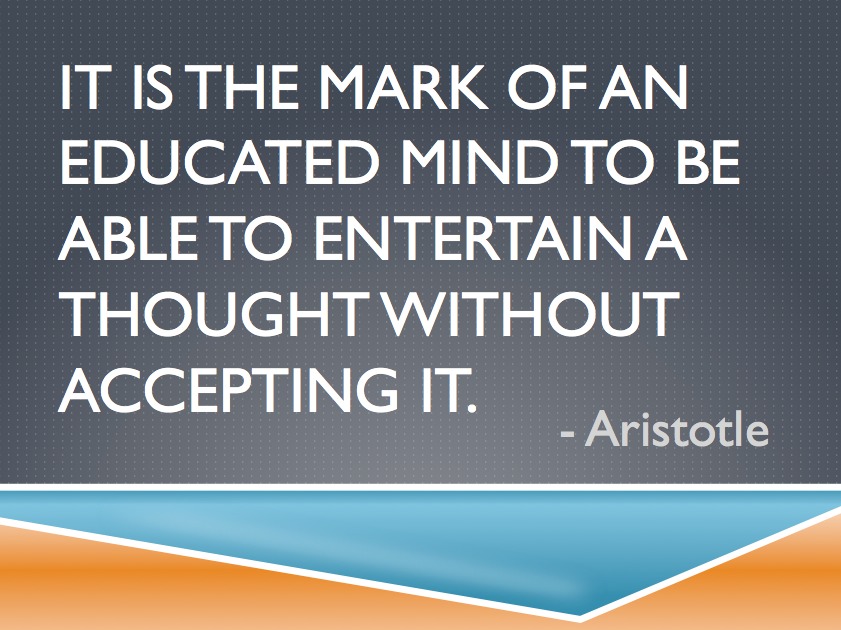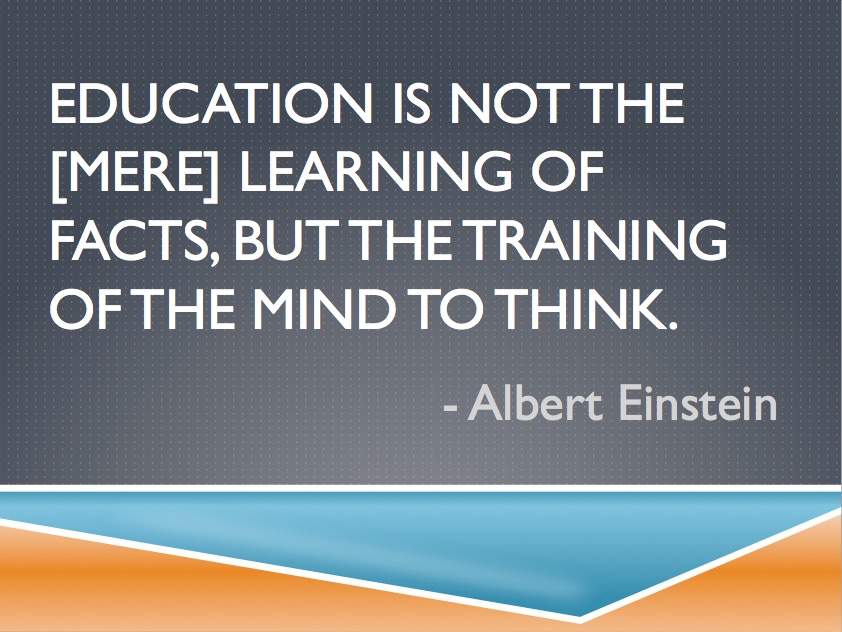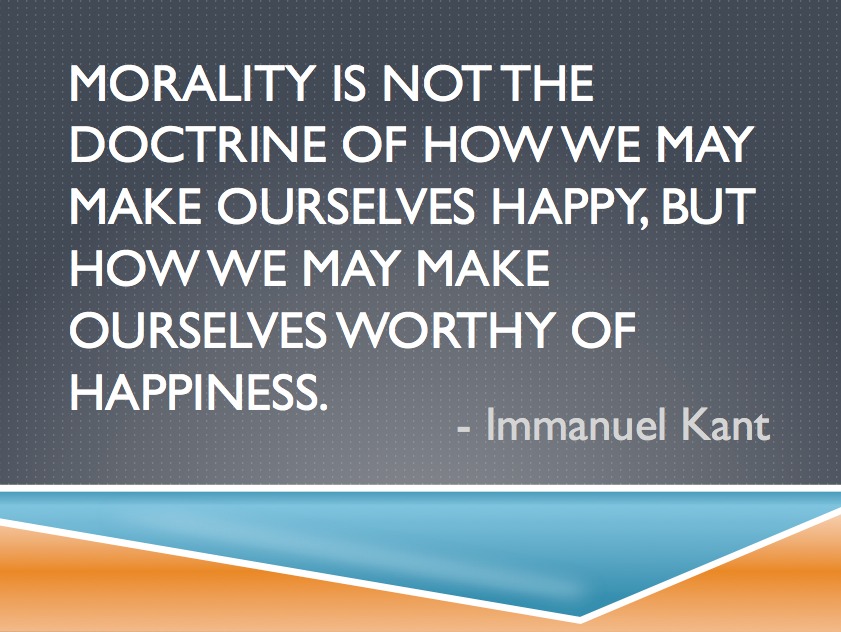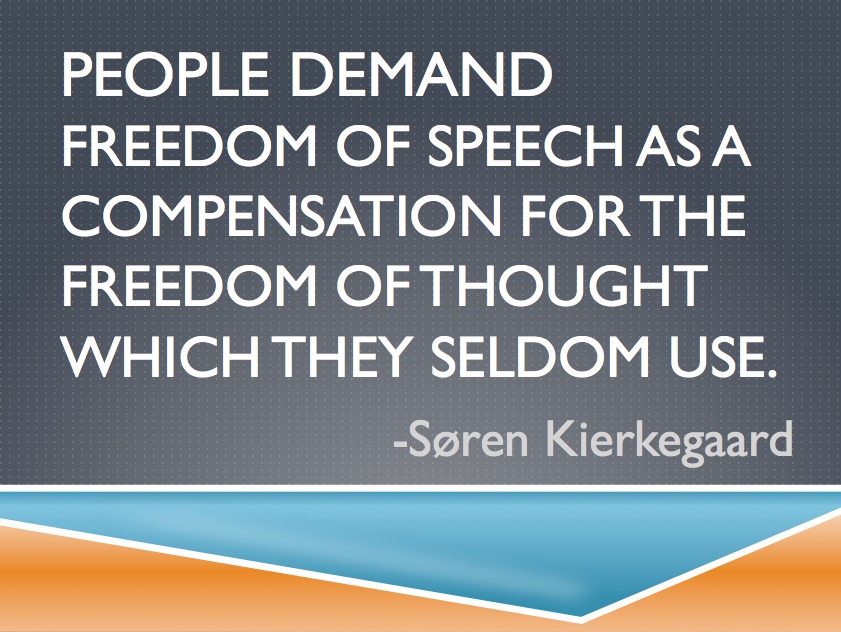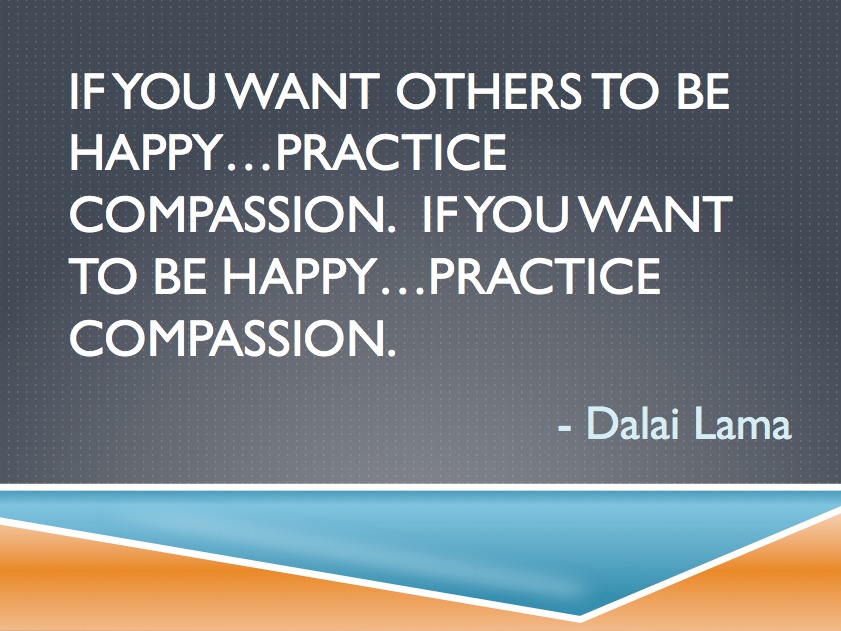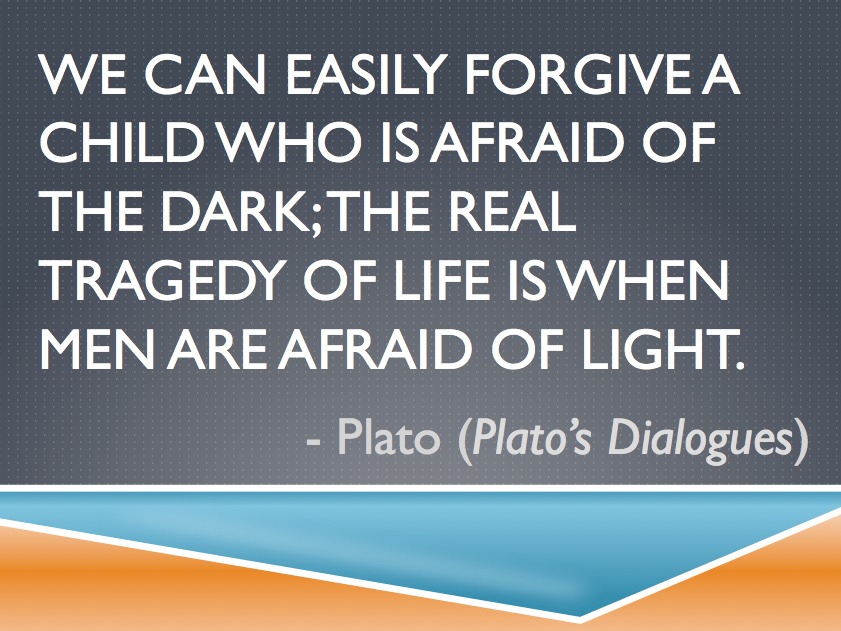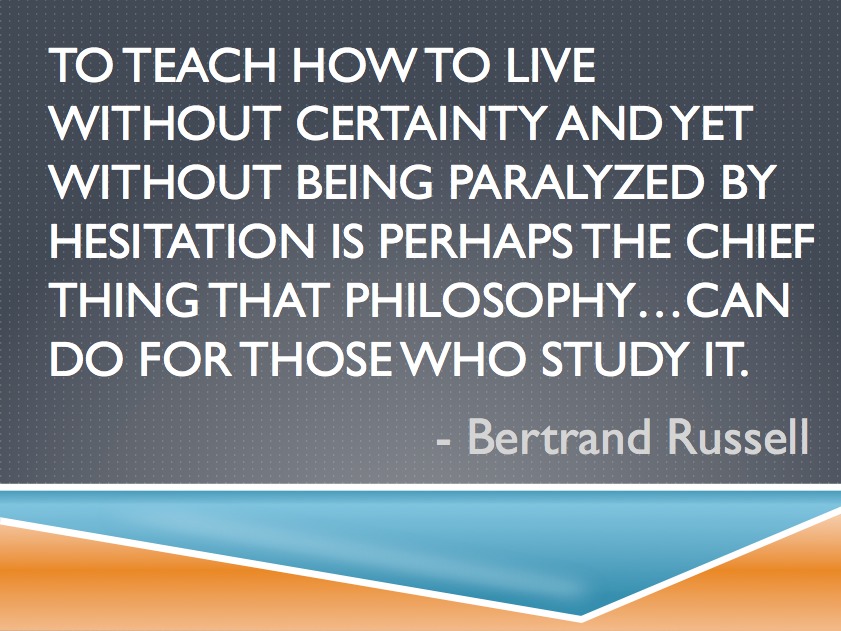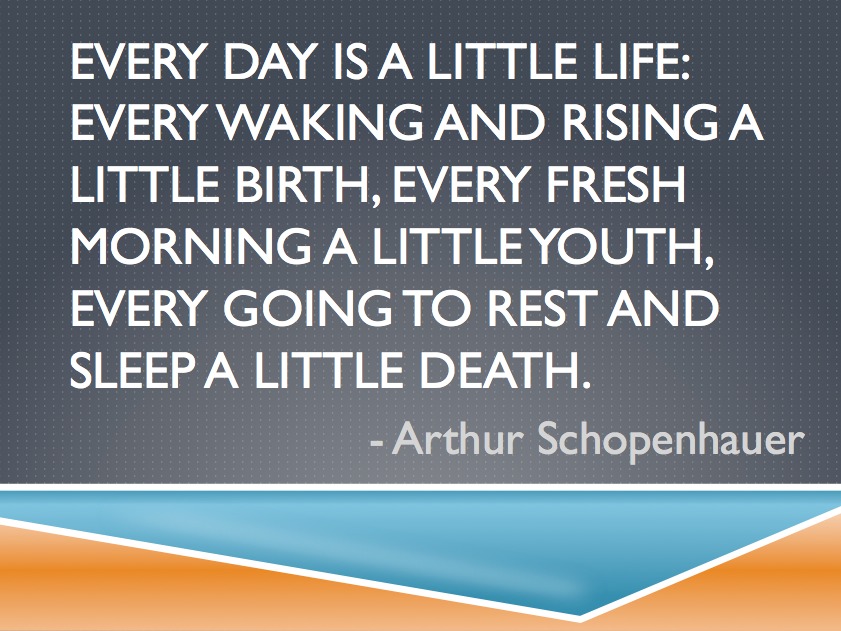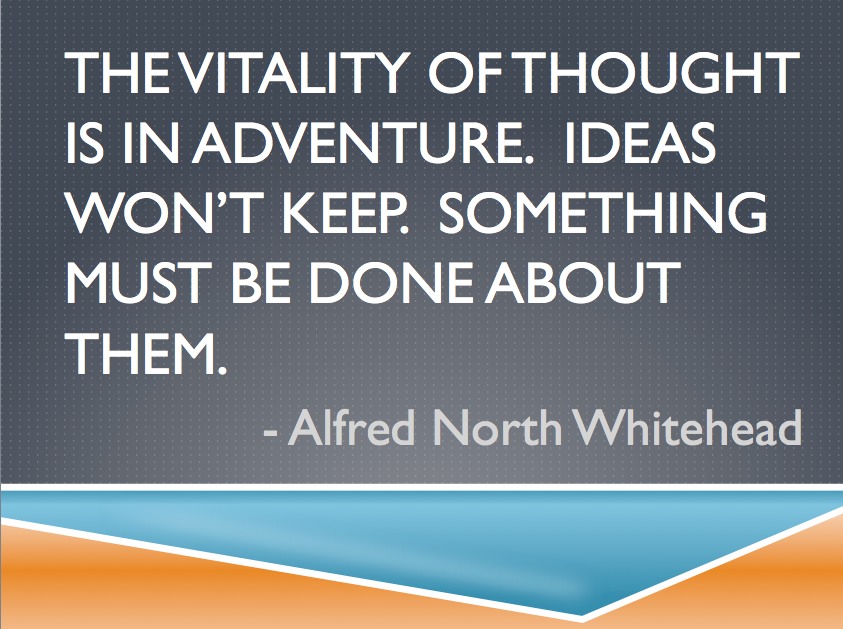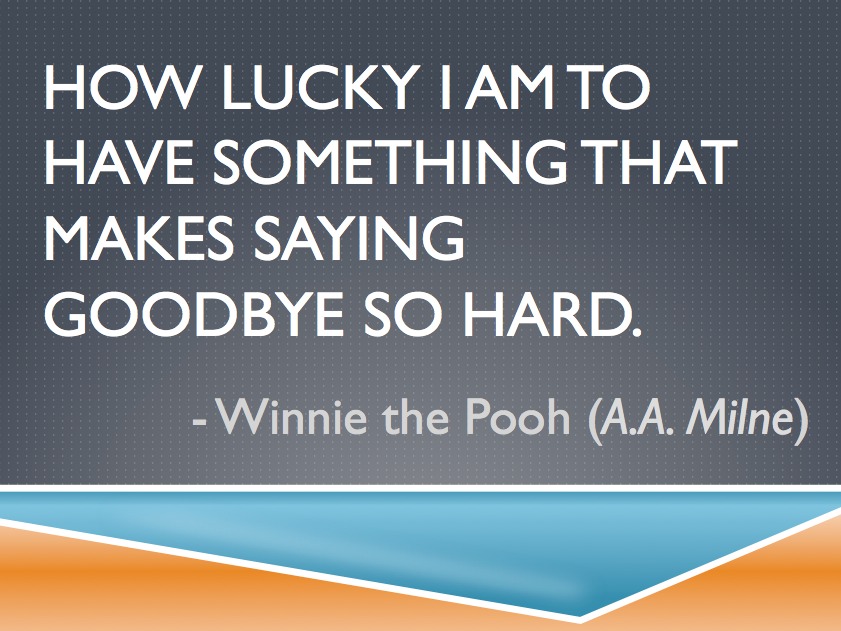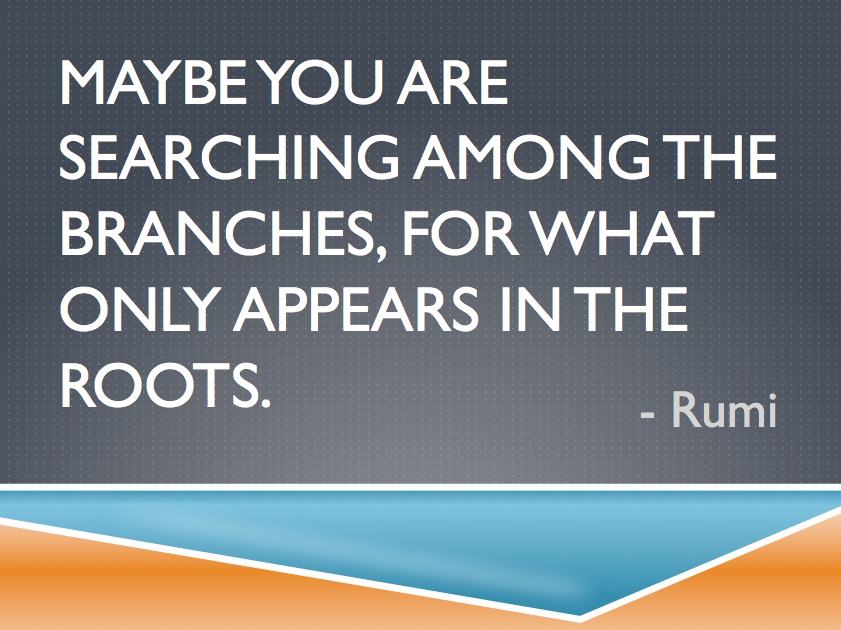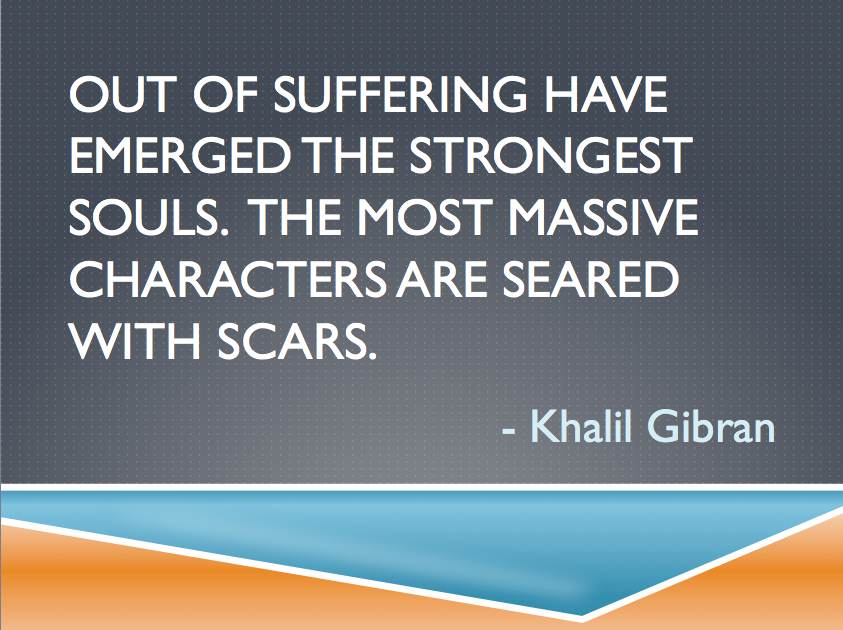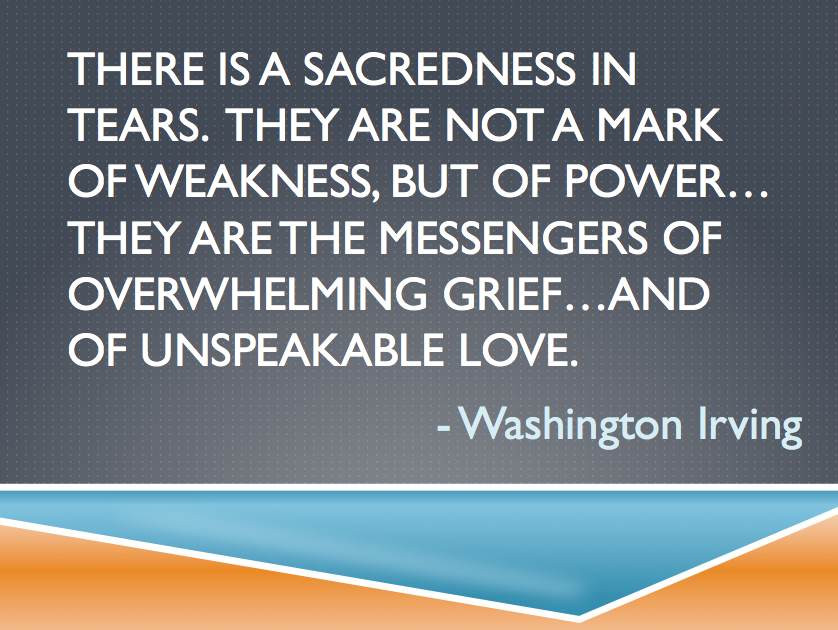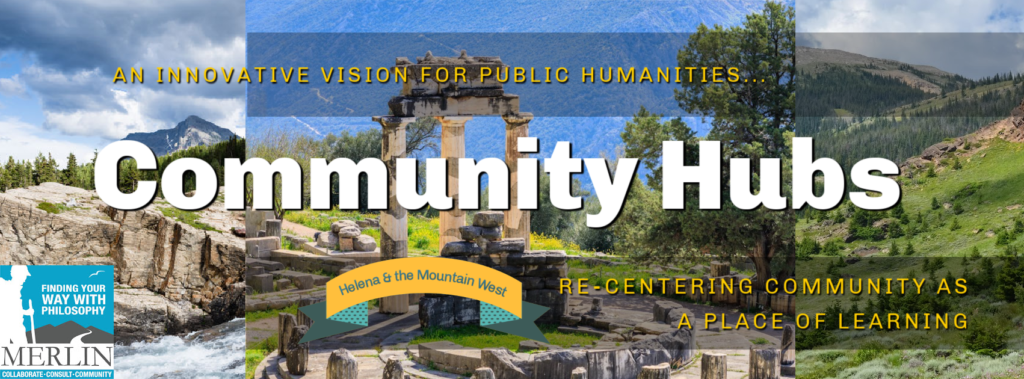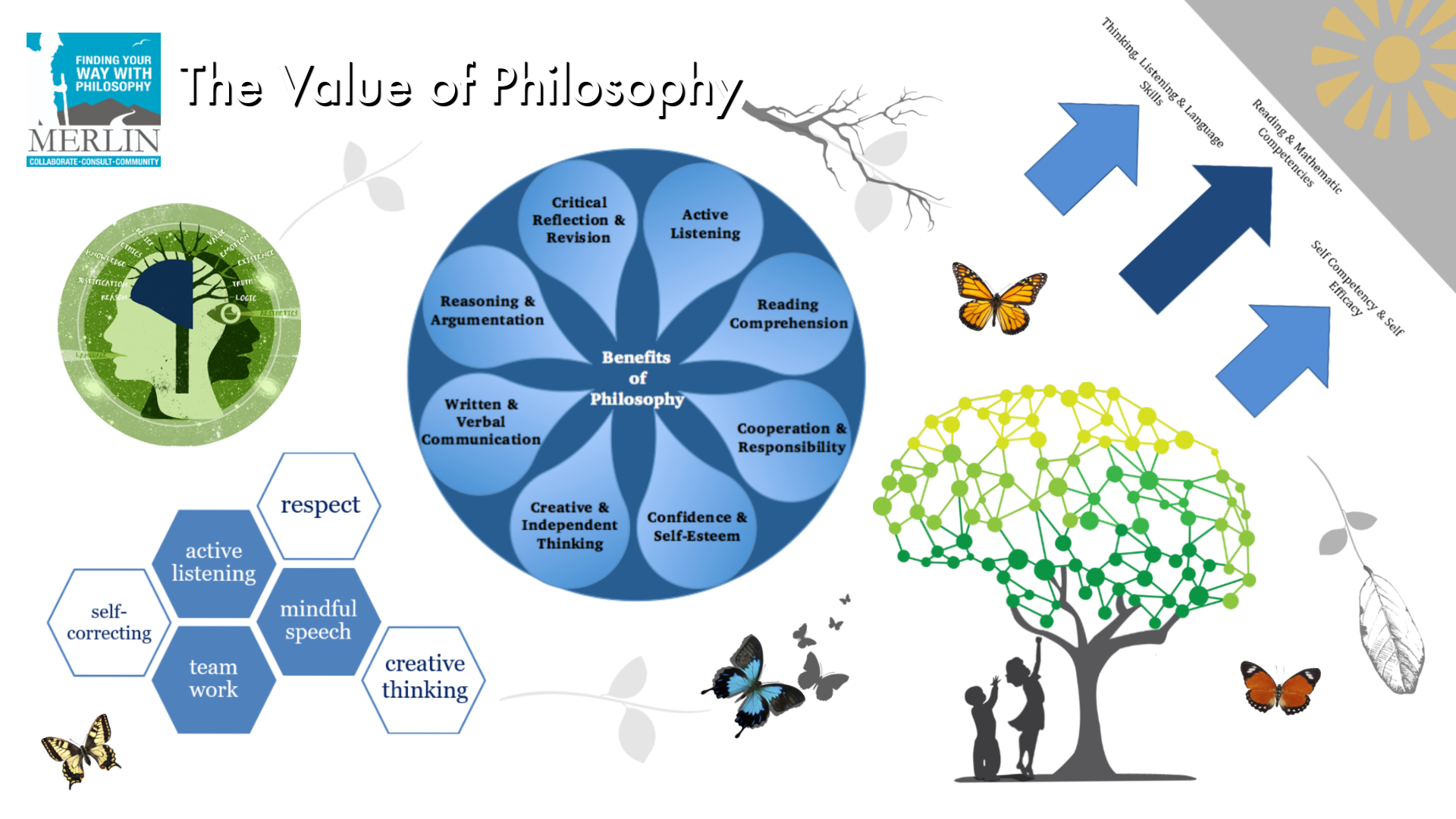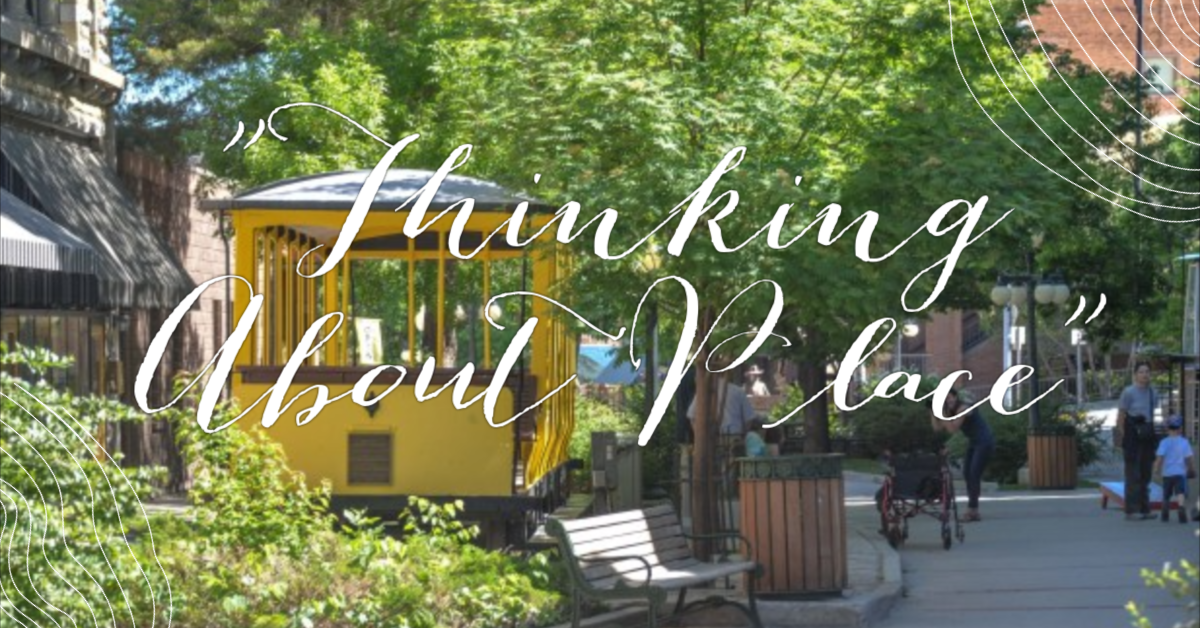
Gertrude Stein’s “there is no there there” has been used as a description for placeless spaces. By contrast, place has some kind of “there” going on. But what is this? What exactly is “place”? There are lots of ways to think about it. In this workshop, we reflected upon Helena’s sense of “place” in terms of our urban outdoors.
When we get that Helena “sense of place” out there, what’s going on? What are we sensing? Is it urban design — deliberate “place-making” on somebody’s part? Is it a lucky accident? Something else? If it’s a mix of those, what’s the ratio? To what extent is deliberate place-making a matter of knowing a lucky accident (and/or other variables)? When can urban design be called “place-making” at all?
This is an unruly bunch of questions, as is to be expected when thinking about something as ill-defined as
“place.” Unruly questions, though, can be fun, and even if they don’t lead to a hard-set definition, they can, in the case of Helena’s urban outdoors, lead to something useful — a shared, or at least better clarified and articulated vision and use of a Helena-specific, vocabulary and frame of reference — a basis, maybe, for practical understanding.
That’s what our ongoing Thinking About Place project is about. Some questions we considered in this workshop included:
- What are authentic temporal elements of “place” — historic time as shown in architecture and other aspects of urban form, and geologic “deep time” shown in outcropping bedrock and the shape of the land?
- What about the shape of the land, distant or within walking distance or underfoot? what about visual juxtaposition of our built landscape with our undeveloped one? Where do in-town assertions of topography result in lucky accidents? (There are some fun examples of this)
- How do the shapes of our urban spaces, and the ways they interconnect, determine how we experience “place”? How do walkable sightlines — designed or accidental — work?
- What’s the place-making role of “street life”? If parts of the Helena outdoors regularly attract lots of foot
traffic and outdoor gatherings, what’s the attraction? What’s the role of walkable interconnectivity? - How do we manage tension between standard urban-development practice and a desire to keep Helena “peculiarity of place”? Can that desire be an element of “green” urban environmentalism?
- What would you add?
Notes & Resources
Other resources related to our “Thinking About Place” project can be found on our community endeavors page.
About the Workshop Leader
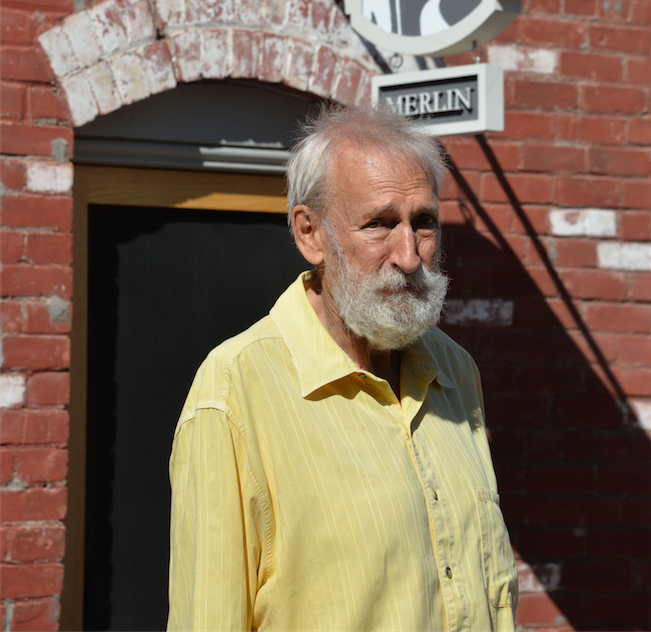
A fourth-generation Helenan, self-taught artist, and former Helena city planner, Dennis has been fascinated by Helena’s architecture for decades. His interests are wide-ranging and deep. Dennis can often be seen walking the trails and streets of Helena, contemplating big ideas about our natural and built environments, history, and art. A self-described urban design geek, Dennis offers a unique “urban environmentalist” perspective — which he defines as a perspective informed by an interest in “walkability” and the “preservation of habitat for curious pedestrians.”

